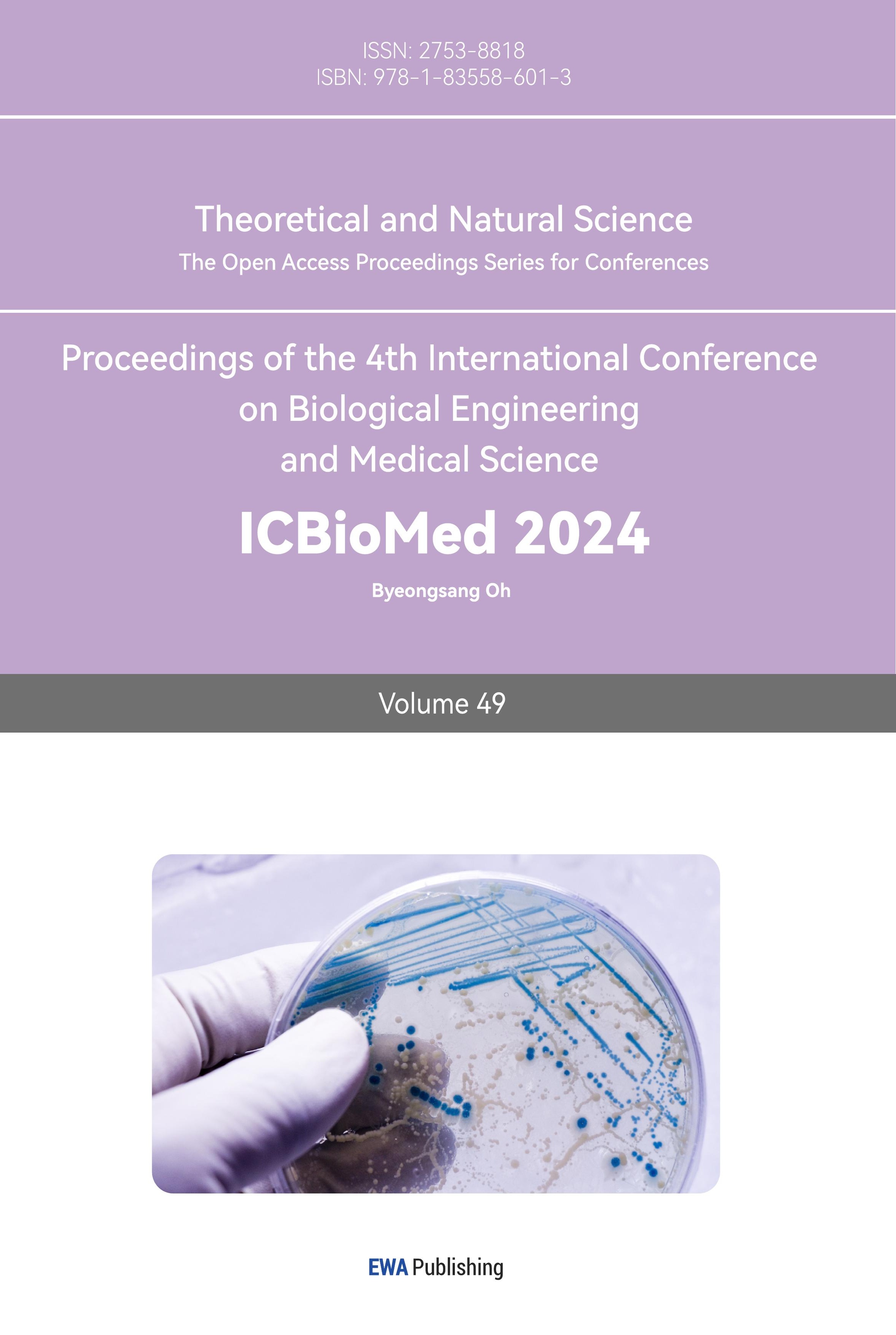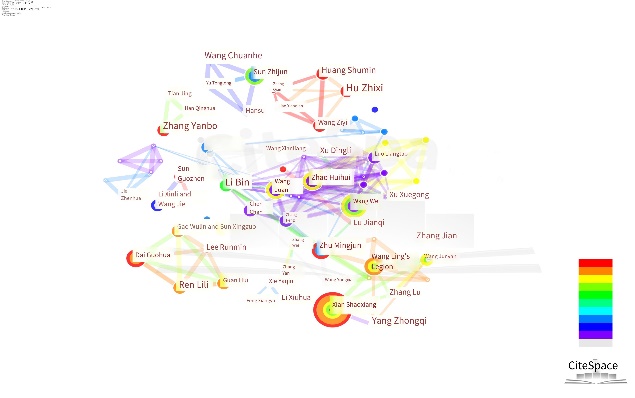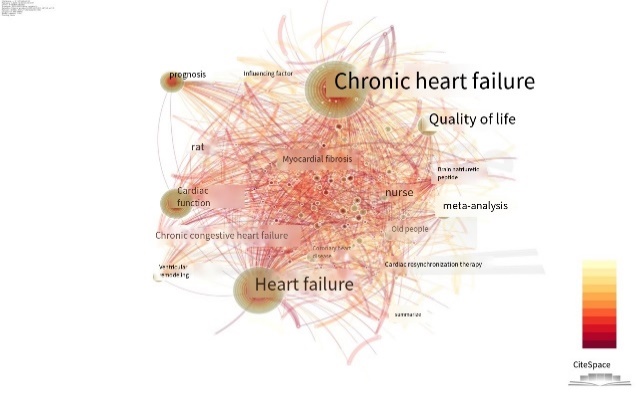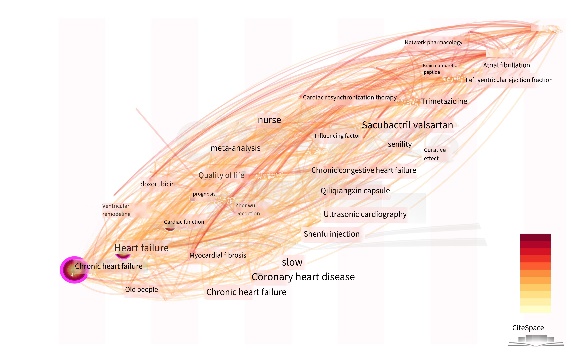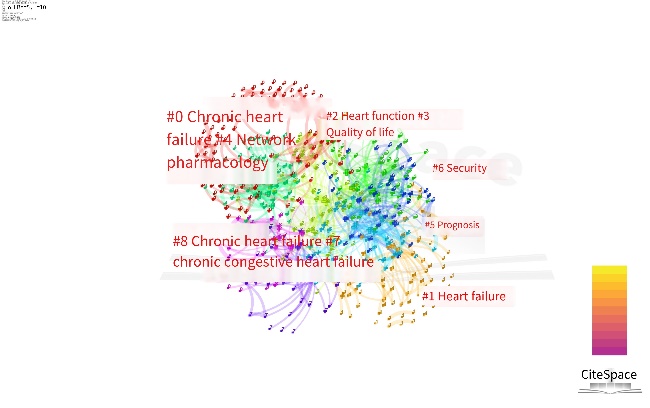1. Introduction
Chronic Heart Failure (CHF) is one of the most common cardiovascular diseases in the 21st century. Globally, the incidence of CHF is on the rise. In populations, the prevalence of CHF is approximately 2%, with an annual incidence of around 0.4%. CHF is more common in elderly patients and is an important health issue affecting aging societies. Over 50% of newly diagnosed CHF patients have other cardiovascular diseases, while over 30% of newly diagnosed cardiovascular disease patients have CHF [1]. During CHF, abnormalities in heart rate and rhythm, loss of cardiac contractile function, and abnormal activation of neurohormonal mechanisms can all affect cardiac function. During CHF, the sympathetic nervous system and the renin-angiotensin-aldosterone system are activated, leading to increased secretion of norepinephrine and angiotensin II, exacerbating cardiac remodeling and accelerating the deterioration of cardiac function [2]. During the development of CHF, accompanied by myocardial remodeling and ventricular reconstruction, both electrical and structural remodeling processes are prone to induce the occurrence and development of other cardiovascular diseases [3]. The combination of CHF with other cardiovascular diseases is one of the therapeutic challenges in the field of cardiovascular medicine, and with the increasing aging population, related research is receiving more and more attention [4]. In this study, we used the visualization software CiteSpace 5.5 R1 to construct a knowledge map of CHF-related research, including network analysis of institutional cooperation, citation journal analysis, keyword co-occurrence analysis, and analysis of literature co-citations, in order to derive the frontiers, hotspots, and development trends in this field. We hope this research can provide valuable references for CHF researchers and promote further development in CHF research.
2. Data Source and Research Methods
2.1. Data Source
The search was conducted using the China National Knowledge Infrastructure (CNKI) as the data source, with the search theme set as “Chronic Heart Failure.” The time range for the search was from 2013 to 2023. The document sources included SCI, EI, CSSCI, CSCD, and Peking University Core Journals. After the search, a total of 2055 documents were retrieved. To ensure the representativeness of the sample literature and the validity of the analysis results, meta-analyses, systematic reviews, reviews, and literature that did not match the research content were excluded. Finally, 1907 articles were determined as research samples, converted into CNKI download format, and saved in RefWorks format for identification and analysis by CiteSpace software.
2.2. Research Methods
CiteSpace 5.5 R1 and Excel software were used to conduct bibliometric and visualization analysis of CHF-related research from aspects such as publication time, authors, countries and institutions, and keywords, revealing the research hotspots and development trends in this field. The time span was set from 2013 to 2023, and different parameters were set for different node types to draw the knowledge map.
3. Results
3.1. Analysis of Annual Publication Volume
Since 2013, the annual publication volume of CHF has shown a downward trend, reaching 137 in 2022. This may be due to reduced demand for new research due to advances in treatment methods. After 2018, it fluctuated up and down, with a slight decrease in 2022, possibly influenced by researchers’ attention to the COVID-19 pandemic. By 2023, the publication volume reached 171, reflecting renewed attention to CHF research and remaining a global public health issue. Trends may be influenced by new discoveries and technological developments. This reflects the gradual decrease and subsequent increase in the intensity of CHF research during this period. It signifies renewed attention to the importance of CHF by researchers, indicating it remains an important global public health issue. This trend may change with new research findings or technological developments. See Figure 1.
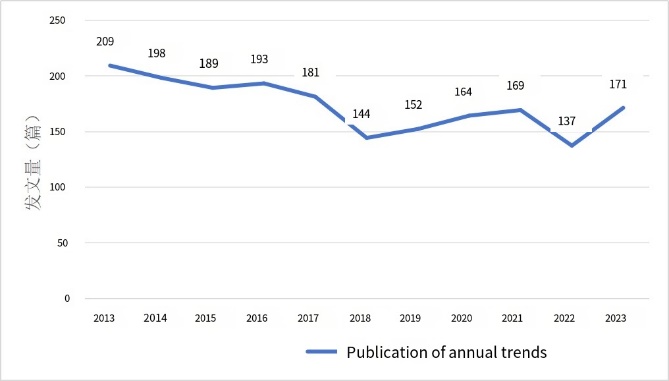
Figure 1. Changes in the Number of CHF Research Literature Publications from 2013 to 2023

Figure 2. Distribution of Top 10 Journal Sources for CHF from 2013 to 2023
3.2. Analysis of Publishing Journals
According to the data provided by CNKI, we have compiled statistics on the top 10 journals by publication volume, as shown in Figure 2. These journals have collectively published 831 academic papers related to CHF. These papers primarily focus on the current and future development trends in the field of CHF and lead the latest research hotspots. The publication volume of these top 10 journals accounts for 43.58% of the total, indicating a relatively concentrated trend. It is worth noting that the papers published in these top 10 journals not only focus on the basic research of CHF but also cover various aspects such as clinical applications and treatment strategies. This comprehensive research perspective not only enhances our understanding of CHF but also provides more possibilities for its treatment.
3.3. Analysis of Institutions and Authors in CHF Research
Table 1. High-Productivity Institutions for Chronic Heart Failure Publications from 2013 to 2023
Frequency | Year of First Appearance | Institution |
14 | 2015 | Shengjing Hospital of China Medical University |
12 | 2020 | First Clinical Medical College, Shandong University of Traditional Chinese Medicine |
9 | 2022 | School of Traditional Chinese Medicine, Hunan University of Chinese Medicine |
4 | 2013 | Department of Cardiology, Nanfang Hospital, Southern Medical University |
4 | 2018 | Department of Cardiology, Affiliated Haikou Hospital, Xiangya School of Medicine, Central South University |
3 | 2013 | Department of Cardiology, Minzu Hospital, Hubei Minzu University |
3 | 2022 | School of Nursing, Tianjin Medical University |
3 | 2022 | School of Nursing, Nanjing Medical University; Department of Cardiology, The First Affiliated Hospital of Nanjing Medical University |
3 | 2014 | Department of Cardiology, The First People’s Hospital of Yunnan Province |
3 | 2022 | Chengde Medical College |
(1) Research Institutions
Analyzing the publishing institutions provides insights into the composition of researchers and the distribution of academic resources in the field, thereby understanding the institutions that are genuinely concerned about CHF research. Table 1 reveals the top 10 research institutions that published studies on CHF from 2013 to 2023. Shengjing Hospital of China Medical University leads with 14 publications. Following closely is the First Clinical Medical College of Shandong University of Traditional Chinese Medicine with 12 publications. Additionally, the School of Traditional Chinese Medicine, Hunan University of Chinese Medicine, published 9 papers. These data reflect the level of activity and influence of these institutions in the field of CHF research.
(2) Core Authors
To identify core authors, we typically focus on those who have published articles as first authors or independent authors. According to Price’s law, we conducted statistical analysis of CHF literature from 2013 to 2023 and found that the maximum number of publications Npmax by first authors (including independent authors) was 25. Therefore, the minimum number  of publications for candidates for core authors in CHF research is calculated as:
of publications for candidates for core authors in CHF research is calculated as:
\( =0.749\sqrt[]{NPmax}=0.749×5=3.745 \)
According to Price’s law, the number of papers published by core authors should account for about 50% of the total papers. Calculating based on this ratio and rounding off, we designate authors who have published 4 or more papers as core authors. Among the 1907 selected documents, a total of 44 authors meet this criterion, and they have collectively published 385 papers, accounting for 20.19% of the total selected literature. Due to space limitations, only the top ten authors with the highest number of publications are listed (as shown in Table 2).
Table 2. Author Publication Quantity Table
No. | Author | Number of Papers |
1 | Xian Shaoxiang | 25 |
2 | Zhu Mingjun | 19 |
3 | Wang Lingjun | 19 |
4 | Wang Wei | 17 |
5 | Zhao Huihui | 13 |
6 | Wang Juan | 13 |
7 | Li Bin | 12 |
8 | Hu Zhixi | 12 |
9 | Dai Guohua | 12 |
10 | Sun Guozhen | 11 |
To gain a deeper understanding of the collaboration between authors, we created a co-authorship knowledge map, as shown in Figure 3. Node size represents the number of publications by each author, while the lines indicate co-authorship, with thicker lines representing higher collaboration frequency. According to the map, Xian Shaoxiang has published 25 papers, followed by Zhu Mingjun and Wang Lingjun with 19 papers each, and Wang Wei with 17 papers. Zhao Huihui and Wang Juan each have 13 papers, indicating they are key contributors. However, the map exhibits a star-like distribution with limited collaboration. There is minimal collaboration among the top five authors, highlighting the need to strengthen collaboration between teams to facilitate knowledge exchange and advance CHF research.
|
|
Figure 3. Co-authorship Knowledge Map | Figure 4. Co-occurrence Network Map of Key Concepts in the CHF Field from 2013 to 2023 |
3.4. Analysis of Research Hotspots and Trends
(1) Co-occurrence of Keywords and Analysis of High-frequency Words
Keywords are highly condensed and summarized representations of document content. Keyword analysis allows us to track research hotspots in the field of CHF. In CiteSpace, we set the time span as “2013-2023” and utilized the pathfinder algorithm along with pruning sliced networks and pruning merged networks to obtain the co-occurrence network map of keywords, as shown in Figure 4. In the graph, nodes represent keywords, with their size indicating frequency of occurrence, and lines representing co-occurrence strength, with more lines indicating higher strength. A total of 560 nodes and 2121 lines were obtained, with a network density of 0.0136, indicating a rich and extensive research content in CHF. Keywords cover topics such as cardiac function, quality of life, prognosis, ventricular remodeling, brain natriuretic peptide, including meta-analyses and the elderly.
Table 3. High-frequency Keywords in Chronic Heart Failure from 2003 to 2023
Frequency | Centrality | Year | Keywords |
1101 | 1.3 | 2013 | Chronic Heart Failure |
511 | 0.53 | 2013 | Heart Failure |
173 | 0.08 | 2013 | Cardiac Function |
84 | 0.02 | 2013 | Quality of Life |
79 | 0.04 | 2013 | Prognosis |
49 | 0.01 | 2013 | Meta-analysis |
44 | 0.04 | 2013 | Chronic Congestive Heart Failure |
40 | 0.02 | 2014 | Ventricular Remodeling |
39 | 0.01 | 2013 | Brain Natriuretic Peptide |
35 | 0.01 | 2014 | Elderly Population |
By conducting statistical analysis on the frequency and centrality of the top 10 keywords, we compiled a list of the top 10 high-frequency keywords in CHF (see Table 3). The most frequent keywords are “cardiac function,” followed closely by “quality of life” and “prognosis,” indicating significant attention to these topics. The core keyword time zone map further analyzed the research focus and trends in various time periods from 2013 to the present. As shown in Figure 5, research on chronic heart failure has shifted from focusing on the disease itself to studying its complications, mechanisms, and medications.
|
|
Figure 5. Core Keyword Time Zone Map | Figure 6. Knowledge Graph of Keyword Clusters in CHF Research from 2013 to 2023 |
(2) Keyword Cluster Analysis
To comprehensively understand the research direction of CHF, keyword cluster analysis was conducted to further grasp the characteristics and development trends of CHF research data, forming clusters of closely related keywords to facilitate understanding the knowledge structure of research hotspots in the CHF field. In this study, the log-likelihood ratio (LLR) algorithm was used to cluster high-frequency keywords, and a knowledge map of CHF research from 2013 to 2023 was drawn accordingly (as shown in Figure 6). The effectiveness of the map was evaluated based on Q and S values. When Q > 0.3, the community structure is significant; when S > 0.5, the clustering is reasonable; and when S > 0.7, the clustering is highly efficient and credible. There were a total of 9 clusters, with Q = 0.414 and S = 0.7842, indicating a significant clustering structure and good effectiveness, which contributes to the analysis of the characteristics and trends of chronic heart failure research. By filtering cluster information, three research hotspots were identified: cardiac function, quality of life, and pharmacology. According to cluster ID sorting, Cluster #8, although small in size (29), had the highest silhouette value (0.865), indicating a relatively concentrated research topic. Cluster #0 had the largest module size (118) with a moderate silhouette value (0.778), indicating significant attention to topics such as echocardiography diagnosis, traditional Chinese medicine treatment, and genetic research in CHF.
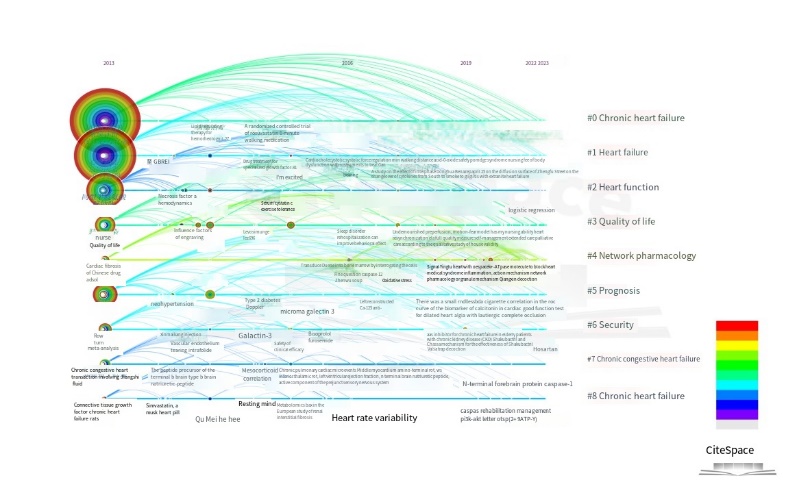
Figure 7. Temporal Knowledge Map of Keywords in CHF Research from 2013 to 2023
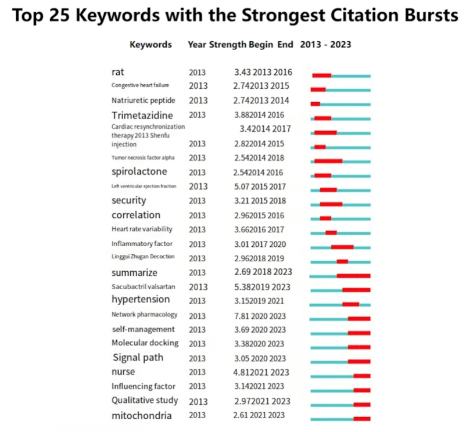
Figure 8. Keyword Emergence in CHF Research from 2013 to 2023
(3) Analysis of Research Trends
In this study, we utilized the time zone view function of CiteSpace to delve into the developmental trajectory of CHF research from 2013 to 2023. The graph displays the development and importance of keywords, as depicted in Figure 7. Notably, patient quality of life is significant in research, indicating its importance, while cardiac resynchronization therapy represents a treatment method, with its position and size indicating its significance. Prognosis indicates researchers’ interest in treatment outcomes and survival rates. Since 2013, cardiac function, quality of life, and prognosis have been research hotspots. Signal pathways and RAS inhibition drugs have been recent research hotspots. On the other hand, “mutation words” reflect significant changes in the frequency and occurrence of keywords during specific time periods. Mutation intensity reflects the frequency of keyword changes and the degree of attention. Using CiteSpace’s burst detection calculation tool, we plotted the top 25 mutation rate keywords from 2013 to 2018, as shown in Figure 8. The results indicate that from 2013 to 2018, research focused on mouse animal experiments, cardiac resynchronization therapy, tumor necrosis factor-alpha, and some traditional Chinese medicine. From 2018 to 2023, treatment directions shifted towards sacubitril valsartan, network pharmacology, and mechanism orientation towards signal pathways, qualitative research, and mitochondria. Since 2020, research has focused on self-management and nursing care in CHF, indicating that modern research is more concerned with patient prognosis and quality of life.
4. Discussion
CHF research has made significant progress since the early 20th century. Early studies focused on etiology and clinical manifestations, revealing coronary heart disease, hypertension, and typical symptoms such as fatigue and dyspnea [5]. Technological advancements have driven research into molecular mechanisms, uncovering the close association between changes in myocardial cell metabolism, apoptosis, fibrosis, and heart failure [6]. Approximately 26 million patients worldwide, with China accounting for 8 million, emphasize the importance of research in improving quality of life and safety [7]. Research areas cover cardiac physiology, pathology, imaging, etc., utilizing methods such as animal models and prospective clinical research to explore treatment strategies and drug targets, aiming to provide reliable evidence for clinical practice [8]. Studies have revealed multiple signaling pathways and molecular regulatory mechanisms, such as RAAS system activation, enhanced inflammatory responses, and increased free radical production. Clinical data analysis shows that 60% of patients have abnormal RAAS activation, leading to myocardial fibrosis and worsening cardiac function [9]. 30% of patients have enhanced inflammatory responses, indicating their importance in pathogenesis. Increased free radical production exacerbates oxidative stress and cell damage. Treatment strategies include beta-blockers to improve cardiac function, aldosterone antagonists to reduce myocardial fibrosis, and cardiac transplantation and resynchronization therapy to improve survival rates [10].
In recent years, significant progress has been made in CHF research. Studies have found that myocardial cell apoptosis and inflammatory responses are crucial for disease development, providing a basis for treatment strategies. New drugs such as ARNI and SGLT2 inhibitors have shown excellent efficacy in reducing heart failure recurrence and mortality [11]. Future research will focus on genetic factors, utilizing artificial intelligence for prediction and prevention, as well as cardiac regenerative medicine, to achieve personalized medical care and disease prevention [12]. In summary, CHF research is moving towards multidisciplinary integration and comprehensive research. Future research will focus on in-depth exploration of pathogenesis, development of new treatment methods, and realization of personalized medical care. These advancements will provide more accurate and effective methods for the prevention and treatment of CHF.
5. Conclusion
In this study, we used CiteSpace 5.5R1 software to conduct visual analysis of 1907 relevant documents on chronic heart failure from 2013 to 2023, summarizing research over the past 10 years. We found that the number of publications in this field showed a trend of gradual decrease followed by an increase. This suggests that chronic heart failure has once again attracted the attention of researchers and is expected to continue to develop. Regarding the authors of the studies, there are numerous dispersed authors, with little collaboration among the top five authors in terms of publication. The level of collaboration between the main research teams is still insufficient, and the main research institutions are also relatively dispersed, indicating the need for further strengthening of cross-team and cross-institution collaboration. Through keyword analysis, we found that there is a high level of attention to the impact of cardiac function and patient prognosis and quality of life in the field of chronic heart failure. Trend analysis of research indicates that studies on chronic heart failure have shifted from focusing on the disease itself to studying the complications, mechanisms, and drugs for heart failure. Analysis of the treatment direction of research shows that early research on chronic heart failure mainly focused on mouse animal experiments, cardiac resynchronization therapy, tumor necrosis factor-alpha, and some traditional Chinese medicine. In recent years, research directions in treatment mainly focused on sacubitril valsartan and network pharmacology, while the research direction in mechanisms mainly focused on signal pathways, qualitative research, and mitochondria. Research directions from 2020 to the present mainly focus on self-management and nursing care for chronic heart failure.
References
[1]. Zhang, Y. N., Siri, G. L., Yang, H. X., et al. (2023). Interpretation of the European Society of Cardiology Heart Failure Association “Clinical Consensus Statement: Definition, Epidemiology, Management, and Prevention of Worsening Chronic Heart Failure” [J]. World Clinical Drugs, 44(10), 1017-1021.
[2]. Du, Q. (2017, February 21). Preliminary Discussion on the Physiological Mechanism of Anti-Angiotensin II Type 1 Receptor Autoantibodies in Chronic Heart Failure. Cardiovascular Hospital, Xiamen University, Fujian Province.
[3]. Wang, N. F. (2017). Complications of Chronic Heart Failure and Their Impact on Prognosis [J]. Electronic Journal of Clinical Medicine Literature, 4(42), 8179+8182.
[4]. Yancy, C. W., Jessup, M., Bozkurt, B., et al. (2017). 2017 ACC/AHA/HFSA Focused Update of the 2013 ACCF/AHA Guideline for the Management of Heart Failure [J]. Journal of the American College of Cardiology, 70(6), 776-803.
[5]. Ziaeian, B., & Fonarow, G. C. (2016). Epidemiology and aetiology of heart failure. Nat Rev Cardiol, 13(6), 368-78.
[6]. Triposkiadis, F., Xanthopoulos, A., Parissis, J., Butler, J., & Farmakis, D. (2022). Pathogenesis of chronic heart failure: cardiovascular aging, risk factors, comorbidities, and disease modifiers. Heart Fail Rev, 27(1), 337-344.
[7]. Savarese, G., & Lund, L. H. (2017). Global public health burden of heart failure. Cardiac failure review, 3(1), 7.
[8]. Recchia, F. A., & Lionetti, V. (2007). Animal models of dilated cardiomyopathy for translational research. Veterinary research communications, 31(1), 35-41.
[9]. McMurray, J. J., Packer, M., Desai, A. S., et al. (2014). Angiotensin–neprilysin inhibition versus enalapril in heart failure. New England Journal of Medicine, 371(11), 993-1004.
[10]. Cleland, J. G., Daubert, J. C., Erdmann, E., et al. (2005). The effect of cardiac resynchronization on morbidity and mortality in heart failure. New England Journal of Medicine, 352(15), 1539-49.
[11]. McMurray, J. J., Packer, M., Desai, A. S., et al. (2014). Angiotensin–neprilysin inhibition versus enalapril in heart failure. New England Journal of Medicine, 371(11), 993-1004.
[12]. Luo, J. H., & He, X. H. (2013). Research Progress of Stem Cell Therapy for Heart Diseases [J]. Medical Review, 19(03), 410-414.
Cite this article
Quzhen,B.;Shi,X. (2024). Current status and trend analysis of chronic heart failure research based on CNKI database and CiteSpace. Theoretical and Natural Science,49,30-38.
Data availability
The datasets used and/or analyzed during the current study will be available from the authors upon reasonable request.
Disclaimer/Publisher's Note
The statements, opinions and data contained in all publications are solely those of the individual author(s) and contributor(s) and not of EWA Publishing and/or the editor(s). EWA Publishing and/or the editor(s) disclaim responsibility for any injury to people or property resulting from any ideas, methods, instructions or products referred to in the content.
About volume
Volume title: Proceedings of the 4th International Conference on Biological Engineering and Medical Science
© 2024 by the author(s). Licensee EWA Publishing, Oxford, UK. This article is an open access article distributed under the terms and
conditions of the Creative Commons Attribution (CC BY) license. Authors who
publish this series agree to the following terms:
1. Authors retain copyright and grant the series right of first publication with the work simultaneously licensed under a Creative Commons
Attribution License that allows others to share the work with an acknowledgment of the work's authorship and initial publication in this
series.
2. Authors are able to enter into separate, additional contractual arrangements for the non-exclusive distribution of the series's published
version of the work (e.g., post it to an institutional repository or publish it in a book), with an acknowledgment of its initial
publication in this series.
3. Authors are permitted and encouraged to post their work online (e.g., in institutional repositories or on their website) prior to and
during the submission process, as it can lead to productive exchanges, as well as earlier and greater citation of published work (See
Open access policy for details).
References
[1]. Zhang, Y. N., Siri, G. L., Yang, H. X., et al. (2023). Interpretation of the European Society of Cardiology Heart Failure Association “Clinical Consensus Statement: Definition, Epidemiology, Management, and Prevention of Worsening Chronic Heart Failure” [J]. World Clinical Drugs, 44(10), 1017-1021.
[2]. Du, Q. (2017, February 21). Preliminary Discussion on the Physiological Mechanism of Anti-Angiotensin II Type 1 Receptor Autoantibodies in Chronic Heart Failure. Cardiovascular Hospital, Xiamen University, Fujian Province.
[3]. Wang, N. F. (2017). Complications of Chronic Heart Failure and Their Impact on Prognosis [J]. Electronic Journal of Clinical Medicine Literature, 4(42), 8179+8182.
[4]. Yancy, C. W., Jessup, M., Bozkurt, B., et al. (2017). 2017 ACC/AHA/HFSA Focused Update of the 2013 ACCF/AHA Guideline for the Management of Heart Failure [J]. Journal of the American College of Cardiology, 70(6), 776-803.
[5]. Ziaeian, B., & Fonarow, G. C. (2016). Epidemiology and aetiology of heart failure. Nat Rev Cardiol, 13(6), 368-78.
[6]. Triposkiadis, F., Xanthopoulos, A., Parissis, J., Butler, J., & Farmakis, D. (2022). Pathogenesis of chronic heart failure: cardiovascular aging, risk factors, comorbidities, and disease modifiers. Heart Fail Rev, 27(1), 337-344.
[7]. Savarese, G., & Lund, L. H. (2017). Global public health burden of heart failure. Cardiac failure review, 3(1), 7.
[8]. Recchia, F. A., & Lionetti, V. (2007). Animal models of dilated cardiomyopathy for translational research. Veterinary research communications, 31(1), 35-41.
[9]. McMurray, J. J., Packer, M., Desai, A. S., et al. (2014). Angiotensin–neprilysin inhibition versus enalapril in heart failure. New England Journal of Medicine, 371(11), 993-1004.
[10]. Cleland, J. G., Daubert, J. C., Erdmann, E., et al. (2005). The effect of cardiac resynchronization on morbidity and mortality in heart failure. New England Journal of Medicine, 352(15), 1539-49.
[11]. McMurray, J. J., Packer, M., Desai, A. S., et al. (2014). Angiotensin–neprilysin inhibition versus enalapril in heart failure. New England Journal of Medicine, 371(11), 993-1004.
[12]. Luo, J. H., & He, X. H. (2013). Research Progress of Stem Cell Therapy for Heart Diseases [J]. Medical Review, 19(03), 410-414.





